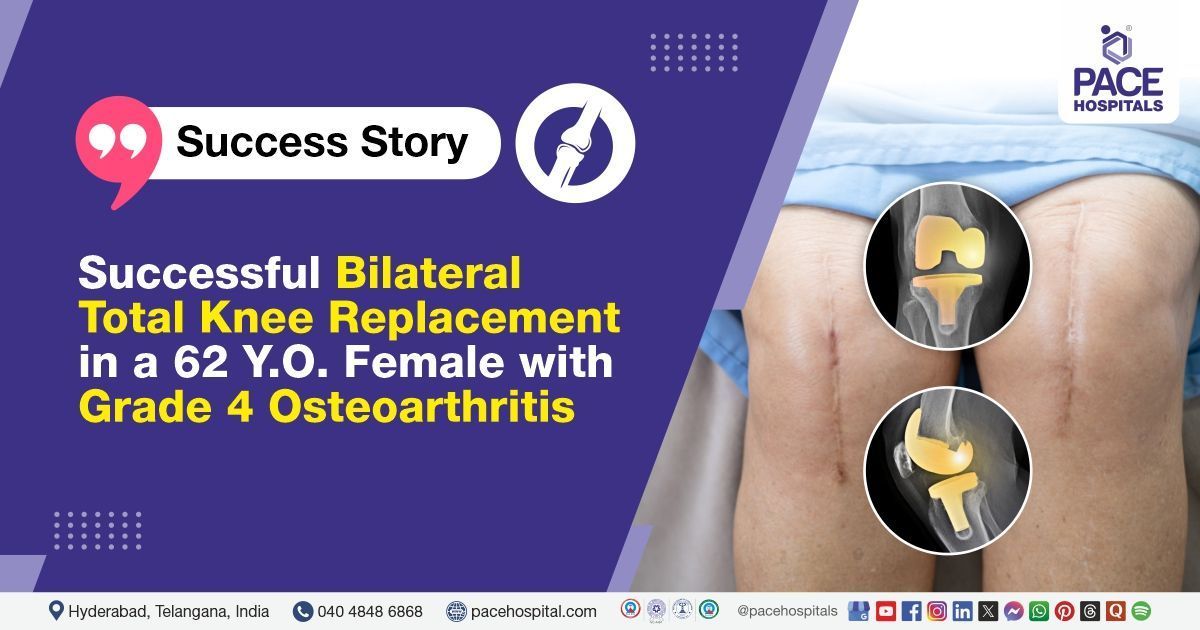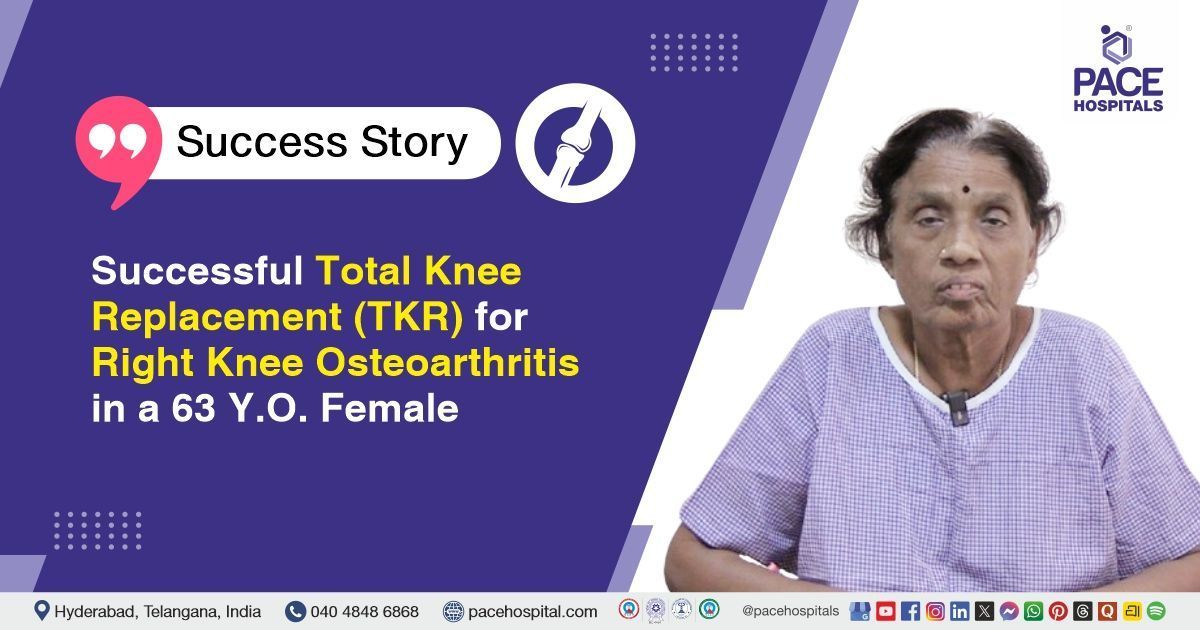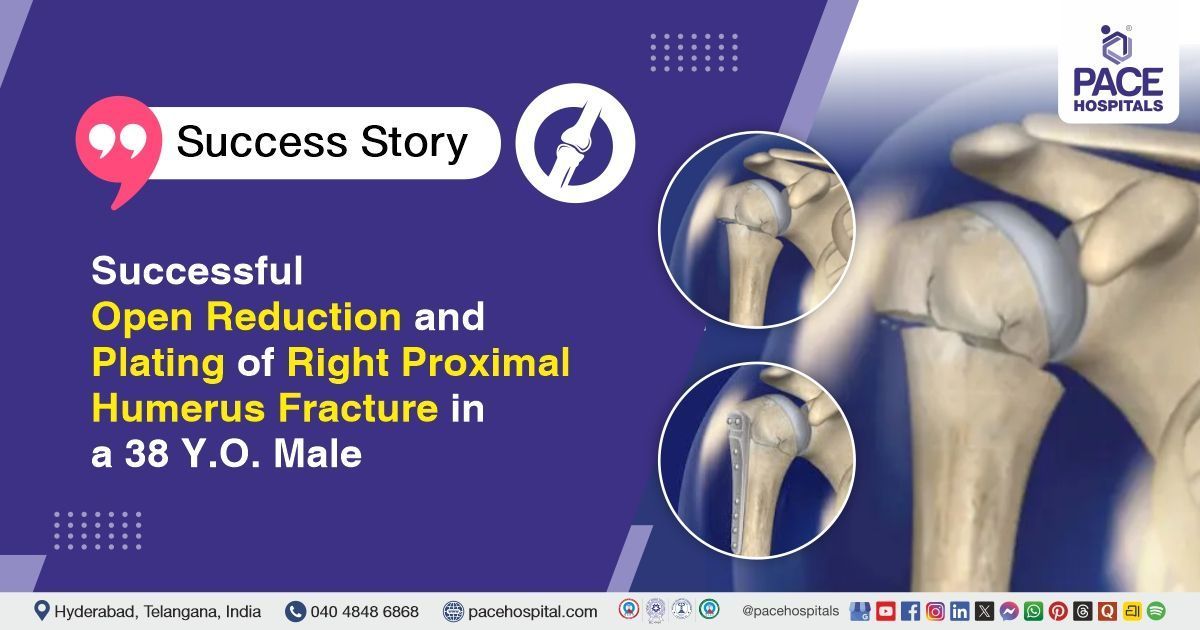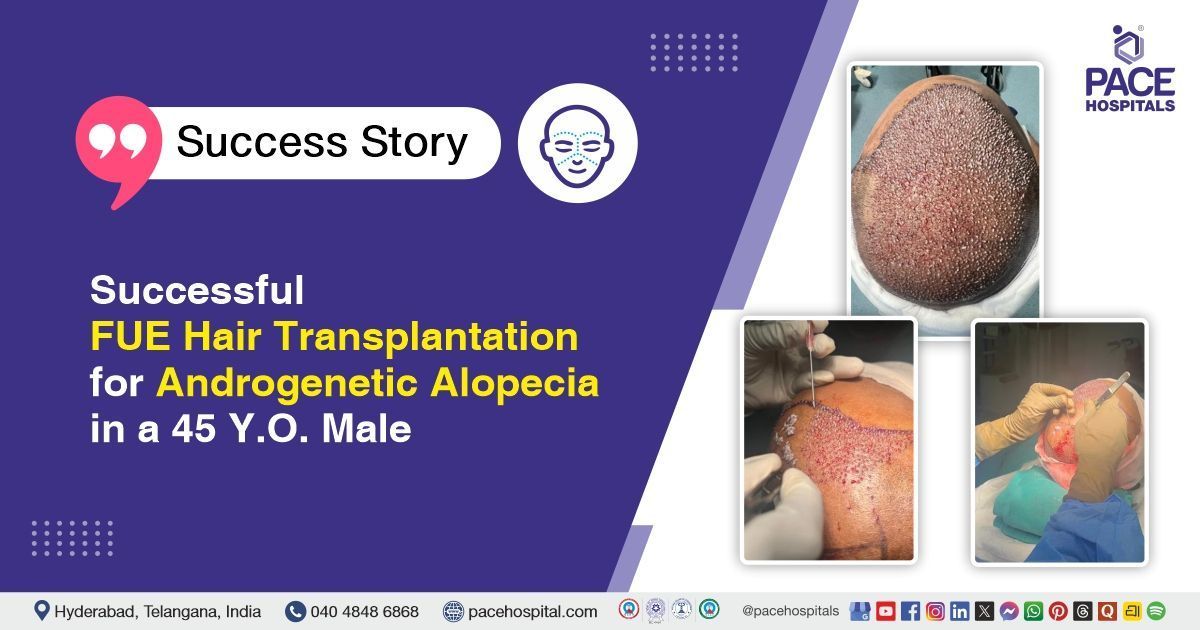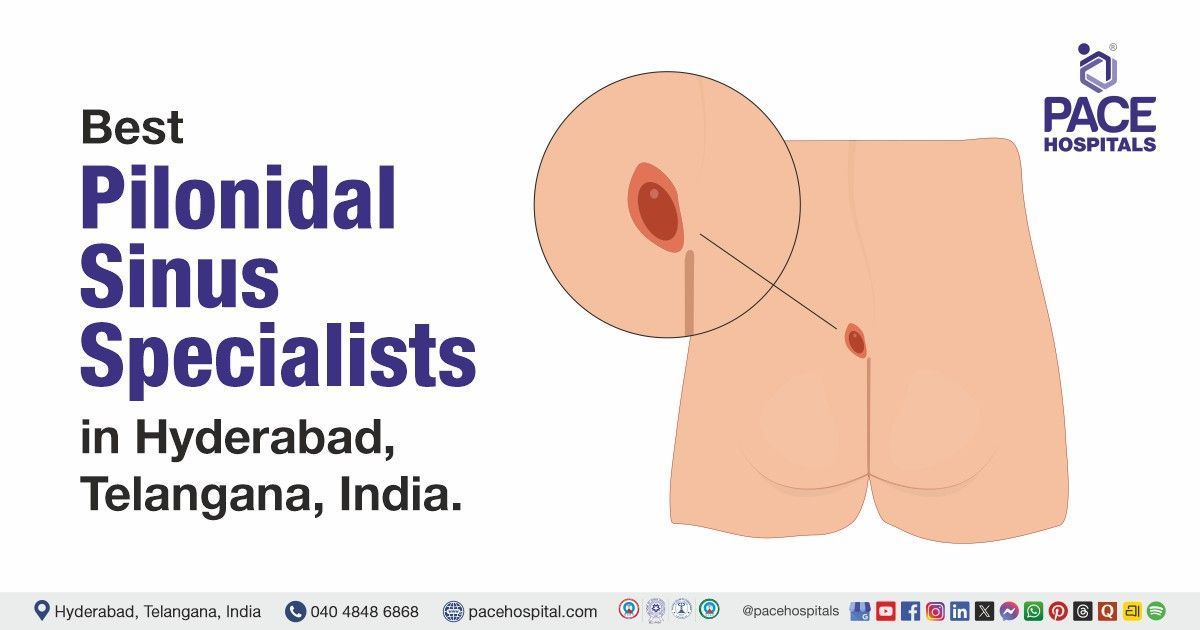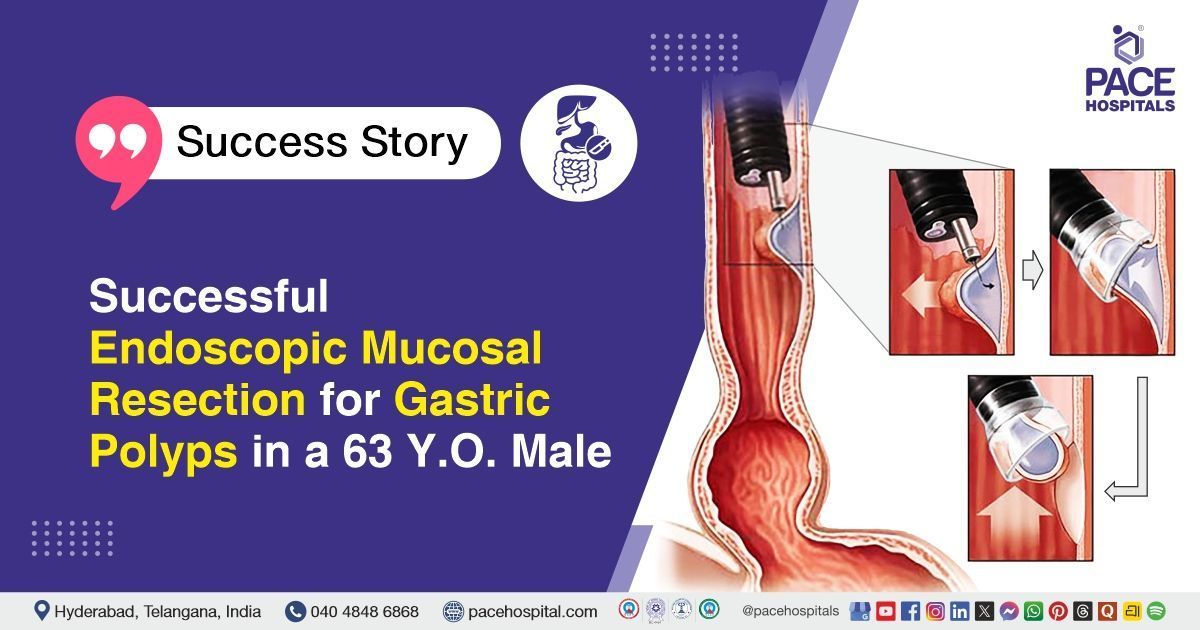Successful Bilateral Total Knee Replacement in a 62 Y.O. Female with Grade 4 Osteoarthritis
PACE Hospitals
PACE Hospitals’ expert Orthopaedic team successfully performed a Bilateral Total Knee Replacement (TKR) using the BIORAD-OURO Knee System on a 62-year-old female patient, who presented with pain in both knee joints associated with difficulty in carrying out daily activities like walking and standing. The surgery was performed to relieve pain, correct deformities, and restore mobility and quality of life.
Chief Complaints
A 62-year-old female patient with a
body mass index (BMI) of 25.2 presented to the Orthopaedics Department at
PACE Hospitals, Hitech City, Hyderabad, with complaints of pain in both knees and difficulty performing daily routine activities such as walking and standing. The pain was associated with stiffness and was progressively worsening. The patient had no history of trauma or any other joint pain.
Past Medical History
The patient is a known case of hypertension and diabetes mellitus and is on regular treatment for both conditions. There was no history of drug allergies.
On Examination
The patient was conscious, coherent, and oriented, with stable vital signs. General examination revealed significant bilateral knee deformities. The left knee exhibited a genu varum deformity with a fixed flexion deformity of 10 degrees, along with palpable crepitus and tenderness over the medial joint line and suprapatellar region. Laxity was noted over the lateral collateral ligament (LCL), and the range of motion was grossly restricted and painful. The right knee showed a genu varum deformity with a 20-degree fixed flexion deformity (FFD), tenderness over the medial joint line, and similar restrictions in movement. No distal neurovascular deficits were observed in either limb.
Diagnosis
Following the clinical examination, the orthopaedic team conducted a comprehensive assessment, including a detailed review of the patient’s medical history with particular attention to her long-standing complaints of bilateral knee pain, restricted mobility. Laboratory investigations indicated the presence of significant abnormalities like severe anemia with microcytic hypochromic red cells, indicating iron deficiency. Elevated white blood cell counts with neutrophilic predominance suggested a postoperative inflammatory response, while low lymphocyte levels pointed to possible physiological stress.
A 2D echocardiogram was performed to assess cardiac function and ensure the patient’s fitness for surgery. The results confirmed that she was medically fit to undergo the procedure.
To confirm the diagnosis and evaluate the severity of joint degeneration, X-rays of both knees in the anteroposterior view were performed. The imaging revealed advanced Grade 4 osteoarthritic changes, characterised by complete joint space narrowing, deformity. Findings were consistent with end-stage osteoarthritis with no distal neurovascular deficit noted, thereby simplifying the surgical and recovery process.
Based on the confirmed diagnosis, she was advised to undergo
Osteoarthritis Treatment in Hyderabad, India, under the care of the Orthopaedic Department, ensuring comprehensive management.
Medical Decision Making
After a detailed consultation with the senior orthopaedic consultant, Dr. Anand Agroya, a comprehensive evaluation was carried out to determine the most appropriate diagnostic and therapeutic approach for the patient. The orthopaedic team conducted a thorough assessment, including a detailed review of the patient’s medical history and a focused physical examination of both knees. Diagnostic imaging with X-rays confirmed advanced degenerative changes consistent with Grade 4 osteoarthritis in both knee joints. The radiographs showed significant joint space narrowing, osteophyte formation, and deformity, indicating end-stage disease.
It was determined that the patient had bilateral knee osteoarthritis, causing chronic pain, restricted mobility, and significant difficulty in performing daily activities. Bilateral Total Knee Replacement (TKR) using the BIORAD-OURO Knee System was identified as the most effective intervention to relieve pain, correct deformities, restore joint alignment, and improve overall function and quality of life.
The patient and her family were thoroughly counselled regarding the severity of the
osteoarthritis, the surgical intervention, potential risks involved, and the necessity of bilateral total knee replacement to restore function and stabilize both knees.
Surgical Procedure
Following the decision, the patient was scheduled to undergo Bilateral Total Knee Replacement Surgery in Hyderabad at PACE Hospitals, using the BIORAD-OURO Knee System under the supervision of the expert orthopaedic Department.
The following steps were carried out during the procedure:
- Anesthesia and Positioning: The patient was administered combined spinal-epidural anesthesia to ensure adequate pain control and muscle relaxation during the procedure. She was then positioned supine on the operating table, with both lower limbs supported and prepared for surgery. Standard aseptic techniques were followed, and both knees were cleaned and draped under sterile conditions.
- Incision and Exposure: A midline anterior incision was made over each knee. The medial parapatellar approach is used to access the joint, and the patella was everted laterally to expose the femur and tibia.
- Bone Preparation: Bone cuts were made using alignment guides: distal femur resection with an intramedullary guide and proximal tibia resection with an extramedullary guide. Femoral anterior, posterior, and chamfer cuts were performed according to the BIORAD-OURO system. Osteophytes and cartilage debris were removed.
- Trial Implantation and Soft Tissue Balancing: Trial components matching measured sizes were inserted. Ligament tension, stability, and patellar tracking were assessed, with soft tissue releases performed as needed to optimize joint balance.
- Cementing and Final Implant Placement: After removing trial implants, the bone surfaces and implants were cleaned and dried. Palacos cement is applied, and definitive BIORAD-OURO femoral and tibial components were implanted. The final polyethylene insert was placed, and patellar resurfacing was done when indicated.
- Wound Closure and Dressing: Meticulous hemostasis was achieved. The wound was closed in layers, drains were placed if necessary, and sterile dressings were applied.
- Contralateral Knee Surgery: The same procedure was repeated on the other knee with appropriate implant sizing, and the patient was transferred to recovery in stable condition.
Postoperative Care
The postoperative period was uneventful. The patient was mobilized early and encouraged to walk with support during the hospital stay under supervision. She had received intravenous antibiotics, analgesics, and supportive treatment. Wound dressings were performed regularly and had remained clean and dry, with no signs of infection. At the time of discharge, the patient was hemodynamically stable without pain, and the surgical site had appeared healthy.
Discharge Medications
Upon discharge, the patient was prescribed a comprehensive medication regimen tailored to support postoperative recovery and prevent complications. This included a course of antibiotics to reduce the risk of surgical site infection, analgesics for effective pain management, and proton pump inhibitors (PPIs) to prevent gastrointestinal irritation associated with analgesic use.
In addition, antiplatelet agents were prescribed to reduce the risk of thromboembolic events during the postoperative period. And advised to continue existing medications for Hypertension and Diabetes.
Advice on Discharge
The patient was advised to keep the surgical dressing dry and to report to the outpatient department for a dressing change after five days. She was instructed to avoid squatting, sitting cross-legged, or using Indian-style toilets to prevent strain on the operated joints. Stapler removal is scheduled for 14 days post-surgery. The patient was also advised to continue physiotherapy as recommended and to strictly follow the Total Knee Replacement (TKR) rehabilitation protocol to ensure optimal recovery and joint function.
Emergency Care
The patient was informed to contact the emergency ward at PACE Hospitals in case of any emergency or development of symptoms such as fever, leg pain, and vomiting.
Review and Follow-up Notes
The patient was advised to return for a follow-up visit with the Orthopaedic Doctor in Hyderabad at PACE Hospitals for a dressing change five days after discharge. A follow-up appointment was scheduled 14 days post-surgery for stapler removal and further evaluation of wound healing and joint recovery.
Conclusion
This case highlights the effectiveness of bilateral total knee replacement (TKR) surgery in managing advanced osteoarthritis of both knees by restoring knee alignment and function, reducing pain, and improving quality of life in patients with severe osteoarthritis, enabling a return to daily activities after recovery.
An Expert’s Perspective on the BIORAD-OURO Knee System in Managing Advanced Osteoarthritis
The BIORAD-OURO Knee System is specifically designed to mimic the natural anatomy of the knee, providing excellent joint stability and functional performance. According to an Orthopaedic doctor / Orthopaedic surgeon, its posterior-stabilized (PS) design effectively compensates for the loss of the posterior cruciate ligament, which is commonly deficient in advanced osteoarthritis cases. The system offers a wide range of component sizes and polyethylene insert thicknesses, allowing precise customization tailored to each patient’s unique anatomy and deformity.
This high degree of customization facilitates restoration of proper alignment, correction of deformities, and achievement of balanced soft tissue tension. Its anatomical design promotes improved knee kinematics and range of motion after surgery. In the case of this patient, the BIORAD-OURO system played a crucial role in managing severe bilateral knee deformities, ensuring durable fixation, and enhancing overall functional outcomes. Additionally, its compatibility with reliable bone cement materials like Palacos further supports long-term implant stability and patient mobility.
Share on
Request an appointment
Fill in the appointment form or call us instantly to book a confirmed appointment with our super specialist at 04048486868

